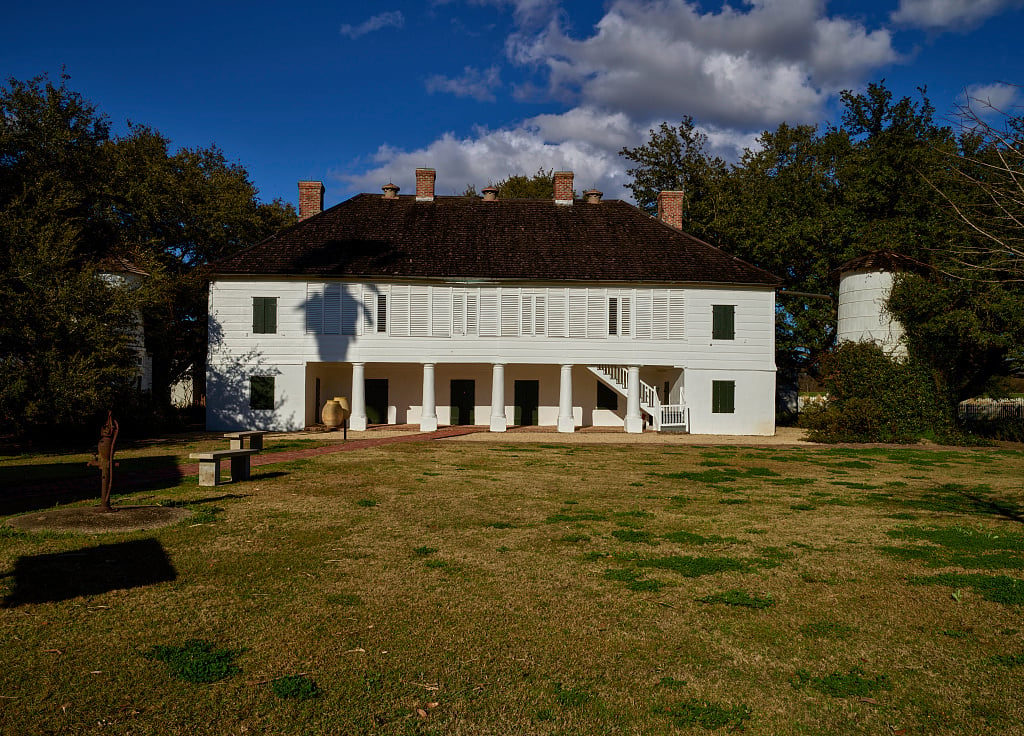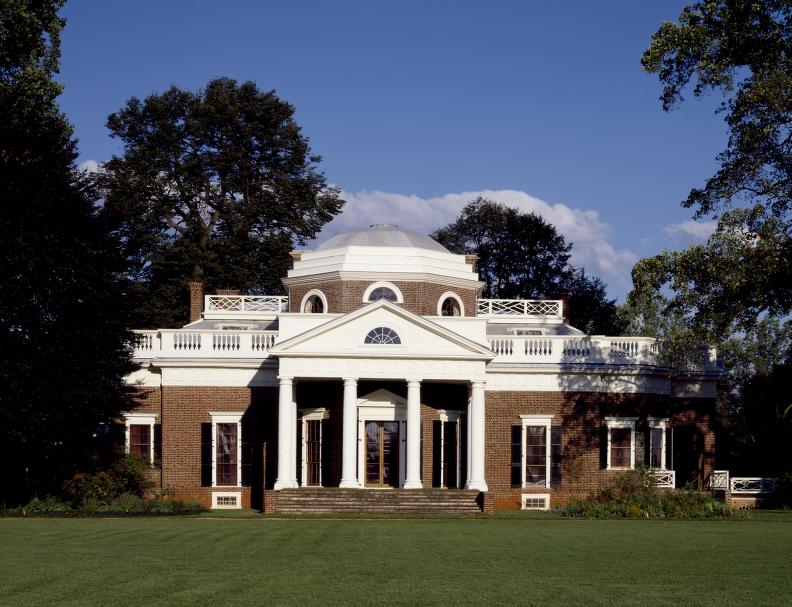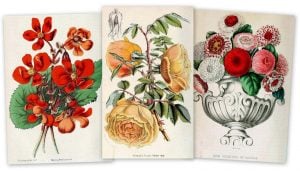Historic southern mansions that still stand today, reflecting power, politics & the past
Across the region, homes like these span a range of styles and purposes. Some were working plantations built before the Civil War. Others served as governor’s mansions, college residences or private estates. Many were constructed with wealth tied to agriculture, industry, or politics — and while they reflect national architectural trends, they also carry local stories that shaped them.

The list below includes more than 20 historic southern homes. Some are open for tours, some are private and a few are now used for education or preservation efforts. We’ve included historical context where it’s relevant, especially in cases where the home was part of a plantation system or connected to forced labor.
These homes reflect shifts in culture, politics and economy over the last two centuries. Seeing how they’ve been preserved — or what’s been left out — can tell you a lot about how history is remembered and who gets to tell it.
If you’re interested in architecture, regional history or public memory, these historic southern homes offer a chance to look more closely at what shaped the South, and what it’s chosen to preserve.
Whitney Plantation in Wallace, Louisiana
Unlike many preserved estates, Whitney Plantation is now a museum entirely focused on the history of slavery in Louisiana. Originally established in 1752, the property once operated as a working sugarcane plantation that relied on the labor of enslaved people. Today, the site includes restored buildings, memorials and first-person narratives that center the experiences of those who lived and worked there under slavery. It’s one of the few historic southern properties that tells this story from the perspective of the enslaved, making it an essential stop for anyone seeking a fuller understanding of the region’s past.
Location: 5099 LA-18, Edgard, LA 70049
Open to the public: Yes
Website: whitneyplantation.org

Monticello in Charlottesville, Virginia
Monticello was the home of Thomas Jefferson, third U.S. president and author of the Declaration of Independence. Built beginning in 1769, the estate was also a working plantation where hundreds of enslaved people lived and labored over generations. For decades, public tours of Monticello largely focused on Jefferson’s political and intellectual life. In more recent years, that has changed: the site now includes dedicated tours and exhibits that address the lives of the enslaved, including reconstructions of enslaved quarters and narratives based on documented individuals. The estate is operated by the Thomas Jefferson Foundation and is open to the public year-round.
Location: 931 Thomas Jefferson Pkwy, Charlottesville, VA 22902
Open to the public: Yes
Website: monticello.org

Rosemont historic mansion in Forkland, Alabama
Sometimes called the “Grand Mansion of Alabama,” this 20-room Greek Revival-style house was built in the 1830s and once sat at the center of a large working plantation. The estate, which covered about 3,000 acres, was originally associated with planter and politician James W. Fitts. The house is privately owned and not open to the public.
Location: County Road 20, Forkland, Greene County, Alabama
Open to the public: No

Bragg-Mitchell Mansion in Mobile, Alabama
Built in 1855, the Bragg-Mitchell Mansion is one of Mobile’s best-known historic homes. Designed in a blend of Greek Revival and Italianate styles, it originally belonged to Judge John Bragg, whose wealth was tied to a cotton plantation. Today, it’s open to visitors and often used for public events and educational tours.
Location: 1906 SpringHill Ave, Mobile, AL 36607
Open to the public: Yes

Montgomery, Alabama: The Governor’s Mansion
The current Governor’s Mansion was built in 1907 and became the official residence in 1950. It has 17 rooms and is surrounded by formal gardens and a guest house. The home represents a later period in Southern architecture and has hosted many state events over the decades.
Location: 1142 S Perry St, Montgomery, AL 36104
Open to the public: Yes

Tuscaloosa, Alabama: President’s mansion (University of Alabama)
Completed in 1841, the President’s Mansion is one of the few buildings that survived the Union’s burning of the University of Alabama during the Civil War in 1865. The structure reflects Greek Revival style and still serves as the home for the university’s president.
Location: University Blvd, Tuscaloosa, AL 35401
Open to the public: Yes

Rhodes Hall in Atlanta, Georgia
Rhodes Hall was built in 1904 for furniture magnate Amos Rhodes. This unique Peachtree Street landmark features stained glass, castle-like architecture, and late Victorian influences. Known locally as “The Castle,” it now serves as a house museum and archives center.
Location: 1516 Peachtree Rd NW, Atlanta, GA 30309
Open to the public: Yes
Website: rhodeshall.org

D.A. Jewell mansion in Chickamauga, Georgia
This 1912 mansion was built for D.A. Jewell, one of the owners of the Crystal Springs textile mill. While not connected to plantation history, the house is a good example of early 20th-century residential design in a small Southern mill town. It’s privately owned and has occasionally served as a rental property.
Location: 105 Cove Rd, Chickamauga, GA 30707
Open to the public: No

MORE: 16 beautiful Victorian homes & mansions in old Detroit from the early 1900s
Governor’s Mansion in Milledgeville, Georgia
Serving as Georgia’s executive residence from 1839 to 1868, this Greek Revival home played a central role during the Civil War era. It was built when Milledgeville was the state capital and is now maintained as a museum by Georgia College.
Location: 120 S Clarke St, Milledgeville, GA 31061
Open to the public: Yes
Website: www.gcsu.edu/mansion

Governor’s Mansion in Jackson, Mississippi
Completed in 1841, this mansion is one of the oldest continuously occupied governor’s residences in the U.S. The design by William Nichols follows the Greek Revival style popular at the time. Today, the home serves both as a residence and as a historic landmark open for public tours.
Location: 300 E Capitol St, Jackson, MS 39201
Open to the public: Yes
Website: mdah.ms.gov/new/visit/governors-mansion/

Longwood Plantation in Natchez, Mississippi
Longwood, also known as “Nutt’s Folly,” is one of the most distinctive homes in the South. Construction began in 1860 but was never completed due to the Civil War. The house has an unusual octagonal shape and an unfinished interior that shows the impact of the war on the Southern elite.
Location: 140 Lower Woodville Rd, Natchez, MS 39120
Open to the public: No
DON’T MISS: 27 old-fashioned wood porch bracket designs

Stanton Hall historic home (“Belfast”) in Natchez, Mississippi
Built in 1857, Stanton Hall was originally the home of cotton planter Frederick Stanton. Its scale and design reflected wealth built through the plantation system. The house later became a public museum and inspired the exterior design for Disneyland’s Haunted Mansion.
Location: 401 High St, Natchez, MS 39120
Open to the public: Find out here

Vaile Victorian Mansion – Independence, Missouri
Completed in 1881, the Vaile Mansion is a good example of Second Empire architecture with Victorian-era detail. Built for Colonel Harvey Vaile, the house had indoor plumbing and other advanced features for the time. It’s open to the public and operated as a historic site.
Location: 1500 N Liberty St, Independence, MO 64050
Open to the public: Yes
Website: vailemansion.org

Raleigh, North Carolina Executive Mansion
Constructed in 1883, this Queen Anne style home serves as the residence for North Carolina’s governor. Built largely with in-state materials and labor, it represents post-Reconstruction Southern civic architecture.
Location: 200 N Blount St, Raleigh, NC 27601
Open to the public: Yes
Website: ncdcr.gov

Dunleith in Natchez, Mississippi
Built in 1856, Dunleith is an antebellum mansion that was part of a working plantation. Its columned design reflects the wealth of the cotton economy and the labor of enslaved people. The home has been used as a historic inn in more recent years.
Location: 84 Homochitto St, Natchez, MS 39120
Open to the public: No

MORE: America’s history of slavery: See some of the terrible old ads actually offering people for sale
Körner’s Folly (Korner’s Folly) in Kernersville, North Carolina
This quirky, three-story home was designed by artist and decorator Jule Körner in 1880. It includes 22 rooms and reflects a mix of Victorian styles with unusual design elements throughout.
Location: 413 S Main St, Kernersville, NC 27284
Open to the public: Yes
Website: kornersfolly.org

Eastover, Kensington Plantation House – South Carolina
Kensington Plantation was part of the pre-Civil War agricultural economy in South Carolina. The house that remains today, sometimes called Kensington Manor, was built in the 1850s and is not open to the public.
Location: SC-764, Eastover, SC 29044
Open to the public: No

The William Post Mansion – Buckhannon, West Virginia
Renovated in 1891, the William Post Mansion is a two-story Neo-Classical Revival home. Though not tied to plantation history, it reflects the wealth and style of the region’s industrial period.
Location: 6 Island Ave., Buckhannon, West Virginia
Open to the public: No

The West Virginia Governor’s Mansion, Charleston
Completed in 1925, the Governor’s Mansion in Charleston includes 30 rooms and formal grounds. It’s one of the more recent homes on this list and features Georgian Revival design.
Location: 1716 Kanawha Blvd E, Charleston, WV 25305
Open to the public: Yes

Oatlands Plantation – Leesburg, Virginia
This estate dates to 1798 and includes a mansion, greenhouse and formal gardens. The property was originally a working plantation that used enslaved labor. It’s now operated by a preservation nonprofit and open for tours.
Location: 20850 Oatlands Plantation Ln, Leesburg, VA 20175
Open to the public: Yes
Website: oatlands.org

Elmwood Mansion – Union, West Virginia
Also known as the Hugh Caperton House, Elmwood was built in the 1830s by a local political figure. The home has been preserved and occasionally opens for special events and private stays.
Location: 184 Elmwood Ln, Union, WV 24983
Open to the public: Yes
Website: elmwoodestate.com

Elmhurst Mansion – Wheeling, West Virginia
Elmhurst Mansion, also known as the House of Friendship, is a Victorian-style home that has been an assisted living residence for 130 years.
Location: 1228 National Rd, Wheeling, WV 26003
Open to the public: No
Website: elmhurstpch.com

Edemar Mansion – Wheeling, West Virginia
Built in the early 1900s, the Edemar Mansion was later converted into the Stifel Fine Arts Center. Its Classical Revival design reflects early 20th-century trends in residential architecture.
Location: 1330 National Rd, Wheeling, WV 26003
Open to the public: Yes
Website: Stifel Fine Arts Center

All photos above by Carol Highsmith, via the US Library of Congress
Plantation home architecture not truly Southern (1952)
By Fred L. Halpern – The Knoxville Journal (Tennessee) July 6, 1952
Atlanta — Many of the white, tall columns used in nineteenth-century Southern homes were shaped by carpenters in New York City who produced them for similar buildings throughout the country.
The widespread belief that the Southern plantation house was a regional contribution to architecture was spiked by Prof. James Grady of the Georgia Institute of Technology’s school of architecture.
“The planters’ homes of the period between 1815 and 1855 were usually models of Greek revival architecture,” according to Professor Grady, ”and there are similar copies throughout the country.”
Grady told of a house in Raleigh, N. C., which was a typical example of the so-called Southern style, and said: “It’s an exact copy of one in Princeton, N. J., which had been built earlier.”

The professor indicated that the common idea that the large, impressive homes were built with a view toward fighting the heat also is erroneous. He explained: “Though they had what they needed for good ventilation — high ceilings, full-length windows, large attics and double porticos — the first thing they were designed for was display.”
“Of course, there was a need for large homes on the plantations, due to large families and the custom of entertaining guests for relatively long periods of time,” Professor Grady continued: “It was fashion that dictated the style of Southern homes, though, and not the weather.
“There’s no extremely hot weather in Williamsburg, Va., and yet there are examples of Greek revival architecture there. You also find such buildings in Ohio and Michigan.”
The style now attributed to the Southern region was originally brought from England where it was popular, under the auspices of Thomas Jefferson. The British examples were known as ‘English Regency.’
“One variation is generally attributed to the South,” according to the professor, ”and that is the detached kitchen. There were the very practical considerations of odors and heat that led to this development.”
Grady concluded: “By and large, though, if a man had money and wanted to show it by building a large house, the national fashion of the time would have pointed to a Greek revival home.”
ALSO SEE: Rosedown mansion: See a restored plantation home from the Old South




















One Response
Just an FYI, the second photo, “Mansion in Natchez, Mississippi,” is Stanton Hall.